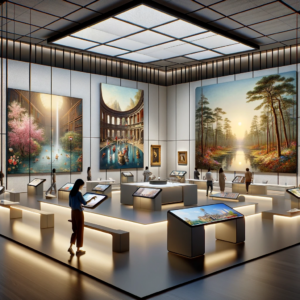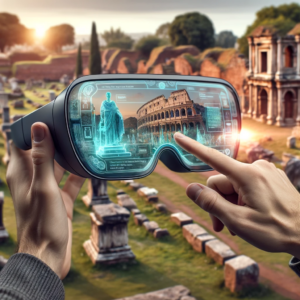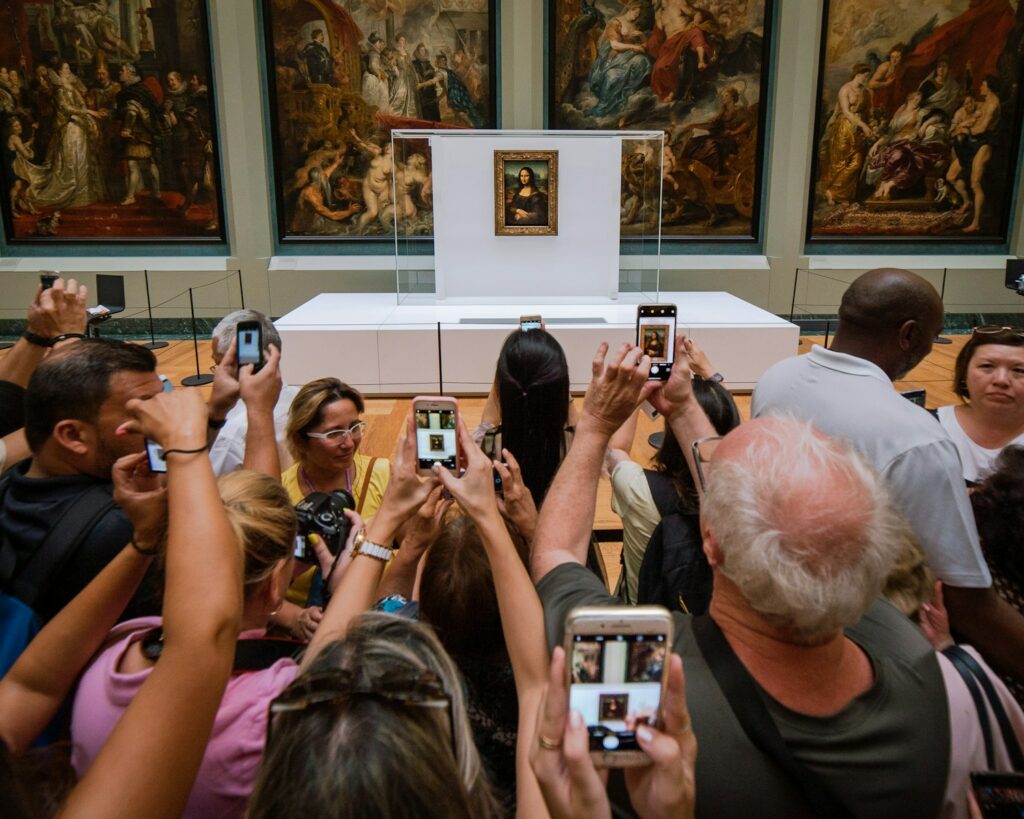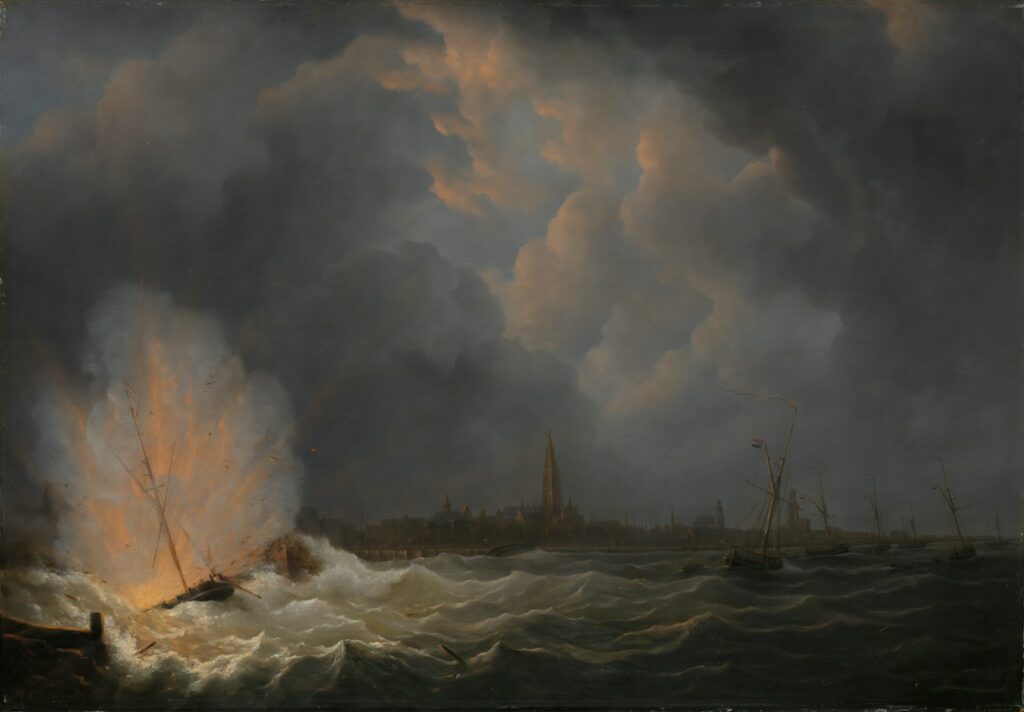The landscape of cultural institutions is undergoing a significant transformation as we move further into the 21st century. Traditional museums, once the bastions of historical preservation and art curation, are being complemented and, in some cases, challenged by a range of modern alternatives. These new spaces and experiences cater to a diverse audience, integrating technology, interactive learning, and community involvement to redefine the museum experience. This exploration delves into several innovative approaches that serve as modern alternatives to old-style museums, highlighting how they cater to the evolving preferences of a digitally native and culturally diverse generation.
 Digital Museums and Virtual Exhibitions
Digital Museums and Virtual Exhibitions
One of the most significant shifts in how we experience art and history is the rise of digital museums and virtual exhibitions. These platforms leverage advanced technologies like virtual reality (VR), augmented reality (AR), and high-resolution imaging to bring museum collections into the digital realm. The Google Arts & Culture project exemplifies this trend, offering virtual tours of thousands of museums around the world. Users can explore artworks in exquisite detail, learn about their history through interactive stories, and even experience curated exhibitions that span multiple institutions. Digital museums break down geographical and physical barriers, making cultural education accessible to a global audience.
The Google Arts & Culture project represents a paradigm shift in how we interact with and perceive art and cultural heritage in the digital age. Launched by Google in 2011, this ambitious initiative aims to make the world’s cultural treasures accessible to anyone, anywhere, at any time. By partnering with over 2,000 museums, galleries, and institutions from around 80 countries, Google Arts & Culture offers an unprecedented virtual access to endless artworks, artifacts, and cultural stories through a web platform and mobile application. This digital endeavor not only democratizes access to art but also offers innovative ways to engage with it, marking a significant milestone in the intersection of technology and culture.
Digital Preservation and Accessibility
One of the core benefits of the Google Arts & Culture project is its role in the digital preservation of artworks and cultural artifacts. High-resolution images and 3D models allow users to explore details that are often not visible to the naked eye, from the texture of a brushstroke to the intricacies of an ancient sculpture. This level of detail not only enriches the viewer’s experience but also serves an important preservation function, documenting and safeguarding cultural heritage against the ravages of time and physical degradation.
 Educational Outreach and Augmented Reality (AR)
Educational Outreach and Augmented Reality (AR)
The educational potential of the Google Arts & Culture project is vast. It provides a rich resource for students, educators, and lifelong learners, offering virtual tours, detailed art analyses, and comprehensive historical contexts. The platform incorporates various educational tools, including augmented reality (AR) experiences and interactive stories, which make learning about art and culture an engaging and immersive experience. These resources have become invaluable for educators looking to bring global cultural education into the classroom, transcending geographical and socio-economic barriers.
Augmented Reality (AR) stands as a revolutionary technology that seamlessly integrates digital information with the real world, enhancing our perceptions and interactions with our surroundings. Unlike virtual reality (VR), which creates a fully immersive digital environment, AR overlays digital content—such as images, sounds, or other data—onto the real-world scene in front of the user. This blend of digital and physical realities opens up myriad possibilities across various sectors, including education, healthcare, retail, and entertainment.
The applications of AR are both diverse and transformative. In education, AR can bring textbooks to life, allowing students to visualize complex concepts and interact with 3D models that make learning more engaging and effective. In healthcare, surgeons use AR to overlay vital patient data during procedures, enhancing precision and safety. Retailers are leveraging AR to offer virtual try-ons, where customers can see how clothes, glasses, or makeup products look on them without physically trying them on, enriching the shopping experience and aiding in decision-making.
One of the most appealing aspects of AR is its accessibility. With the proliferation of smartphones and tablets equipped with AR capabilities, users can access these immersive experiences without the need for expensive or specialized equipment. This widespread availability is propelling AR into mainstream use, transforming how we work, learn, shop, and play.
As AR technology continues to advance, its potential to reshape our interactions with the digital world grows. From enhancing real-time navigation to enabling more immersive social interactions, AR stands on the brink of redefining the boundaries between digital and physical realms, offering a more enriched, interactive, and informative experience of reality.
Innovative Exhibitions
Beyond mere digital cataloging, Google Arts & Culture curates innovative online exhibitions that explore themes, movements, and connections across cultures and time periods. These exhibitions, often created in collaboration with the contributing institutions, provide thematic narratives that contextualize the artworks, offering insights into the social, historical, and political dynamics that shaped them. This approach encourages users to explore art in a more connected and holistic manner, fostering a deeper appreciation and understanding of cultural diversity and human creativity.
Bridging Cultures and Communities
At its heart, the Google Arts & Culture project serves as a bridge connecting cultures and communities across the globe. By offering tools that allow users to explore cultural heritage from diverse perspectives, it promotes understanding and appreciation for the richness of human civilization. The platform’s emphasis on inclusivity and accessibility ensures that culture, in its many forms, is available to all, breaking down the traditional barriers that have limited access to the world’s art and heritage.
The Future of Cultural Engagement
As the Google Arts & Culture project continues to expand its collection and innovate with new technologies, it sets the stage for the future of cultural engagement. Its impact extends beyond individual enjoyment, contributing to the global preservation of culture and the promotion of cultural literacy. In an increasingly digitized world, projects like Google Arts & Culture play a crucial role in ensuring that art and culture remain vibrant and accessible components of human society, fostering a global community united by shared cultural heritage.
In conclusion, the Google Arts & Culture project exemplifies the transformative potential of technology in the cultural sector. By leveraging digital tools to make art and culture more accessible, engaging, and educational, it redefines the parameters of cultural consumption and preservation in the 21st century, ensuring that the treasures of our collective human history are not only preserved but also shared widely and freely.
Interactive and Immersive Experiences
The traditional museum experience, often characterized by passive observation, is being transformed by interactive and immersive experiences. These spaces engage visitors through participatory installations, hands-on activities, and immersive environments that stimulate the senses and provoke thought. The Museum of Ice Cream and the Color Factory are prime examples, offering vibrant, photogenic spaces that encourage play and exploration. Meanwhile, immersive art collectives like TeamLab create vast, digital landscapes where visitors can interact with flowing, ever-changing art pieces. These experiences emphasize active engagement, inviting visitors to become part of the art itself.
Pop-up Museums and Temporary Exhibitions
Pop-up museums and temporary exhibitions offer a flexible and dynamic approach to showcasing art and cultural artifacts. Unlike traditional museums, which often house permanent collections, these temporary spaces can quickly adapt to new trends, showcase emerging artists, and address current social issues. Pop-up museums are particularly effective in urban areas, where they can occupy vacant spaces and attract visitors with their novelty and timeliness. They also offer a platform for experimental and avant-garde works that might not find a home in more conventional institutions.
Community-Centered Cultural Spaces
Modern alternatives to museums also include community-centered cultural spaces that prioritize local history, art, and culture. These spaces often combine elements of museums, galleries, and community centers, providing a platform for local artists, historians, and cultural practitioners. They foster a sense of community ownership and involvement, encouraging visitors to contribute to the narrative and preservation of their cultural heritage. By focusing on local relevance and community engagement, these spaces offer a more personalized and meaningful museum experience.
Education-Focused Initiatives
Education-focused initiatives represent another significant departure from traditional museum models. These programs aim to make learning interactive, fun, and relevant to contemporary issues. Museums like the Exploratorium in San Francisco and the National Museum of Mathematics in New York City focus on hands-on learning experiences that make complex concepts accessible and engaging. These institutions often collaborate with schools and educational organizations to develop curricula and programs that extend the learning experience beyond the museum’s walls, emphasizing the role of museums as educational resources rather than mere repositories of objects.
Conclusion
The evolution of cultural institutions reflects broader changes in society’s consumption of art, history, and knowledge. Modern alternatives to old-style museums, with their emphasis on accessibility, interactivity, and community engagement, cater to the diverse needs and preferences of today’s audiences. They challenge the notion of what a museum can be and do, pushing the boundaries of cultural education and preservation in the digital age. As these innovative spaces continue to proliferate, they offer exciting possibilities for the future of museums and the ways in which we connect with our cultural heritage.




